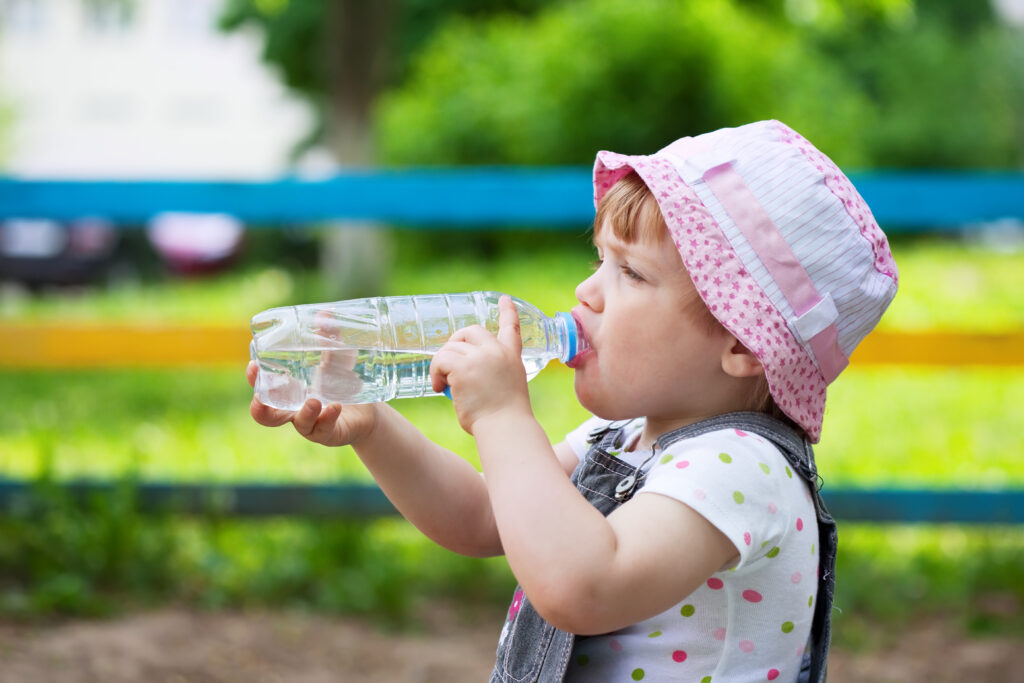
Hydration is a concern any time of the year. However, being active in the summer sun and humidity increases the potential for electrolyte losses. Dehydration can lead to fatigue, fainting, and worse in our children. It also disrupts digestion and has other negative impacts on their system. Are your children playing hard at camp or engaged in sports this summer? If so, please encourage them to properly hydrate!
Water rules
The best way to remain hydrated is to drink water throughout the day. In most cases, it’s all your child needs. If your child has difficulty remembering to drink, try writing an hour-by-hour timeline on their water bottle. This will encourage them to drink throughout the day. And when water gets too “boring,” consider:
- Flavoring it with citrus
- Throwing in a couple of ice cubes made from 100% fruit juice
- Including calorie-free tea throughout the day (brew a fruit-flavored herbal tea, chill overnight)
Electrolyte replacement
We don’t always need an electrolyte-enhanced drink. Usually, water is ideal. However, there are circumstances when we need to replenish losses. You’ll know your child has lost sodium if there are white marks on clothes or hats. If you can feel salt on their skin, that is also a sign. In these cases, electrolyte replacement may be necessary. Choose Guiding Stars rated electrolyte-enhanced waters, coconut water, and other beverage options. (They don’t have the added sugars, artificial colors, or other attributes we’re trying to limit.) You can also add tablets or powders to water that only offer sodium, potassium, and natural flavors. And keep in mind that hydration before and after activity matters just as much as during.
Hydration guidelines
The simplest way to know if your child is drinking enough is to monitor their urine color. (Pale yellow to almost clear is the goal.) Sure, this may not be something you usually talk about. But it’s the clearest and easiest way to know that they’re giving their body the fluid it needs. Another way to approach daily fluid needs is to divide your child’s body weight by two. For example, a 120-pound child or teen needs approximately 60 ounces of fluid a day.
Higher-intensity activity, long-duration activity, and warmer temps all increase hydration needs. Use this simple guide:
- Two hours prior to activity: 16 ounces
- 10-20 minutes prior to activity: 8 ounces
- Every 15-20 minutes during activity: 4-8 ounces
- Following exercise: monitor urine status to ensure fluids are replenished (additionally, a protein enhanced drink following rigorous activity to reduce muscle soreness while also hydrating).
Think outside the glass
Along with water and electrolyte-enhanced beverages, there are other ways to stay hydrated. Watery produce like cucumbers, iceberg lettuce, and watermelon help hydrate. Additionally, remember to enjoy other beverages like milk/dairy alternatives, flavored seltzers, and smoothies.
Make it fun
Your family is more likely to hydrate when the drinks are fun. This watermelon slushie includes replenishing watermelon along with naturally hydrating coconut water. Or try this strawberry mint spritzer that can be enjoyed “as is” or frozen for a perfect summer treat.